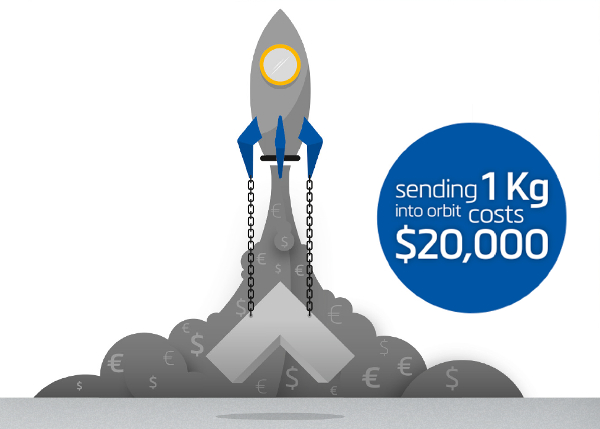
Reasons to 3D Print Metal Parts:
Building the Case
If you are involved in designing or making metal parts, then you’ll already be aware of some of the possibilities and freedoms of Metal 3D Printing. You might even have thought about using additive manufacturing methods for a project. So what’s stopping you? Maybe you’re struggling to make a strong case for it internally or the benefits don’t add up for you yet. In the following, we’re making our case for 3D printing metal parts — to help you make yours.
First of all, Metal 3D Printing is ready now – both in terms of the materials and properties that can be achieved and the design, build and process control software available. At the same time, subcontracting or 3D Printing as a service provides access to a wide range of print technologies and materials, so you don’t immediately have to commit to a machine or a specific method.
Barriers to using 3D Printing are manifold and some are amplified for metal applications, where traditional methods are deeply engrained. Yet, as we’ll see, this is also where key benefits of additive manufacturing methods can have the biggest impact.
1
Save time: wait hours or days, not weeks and months
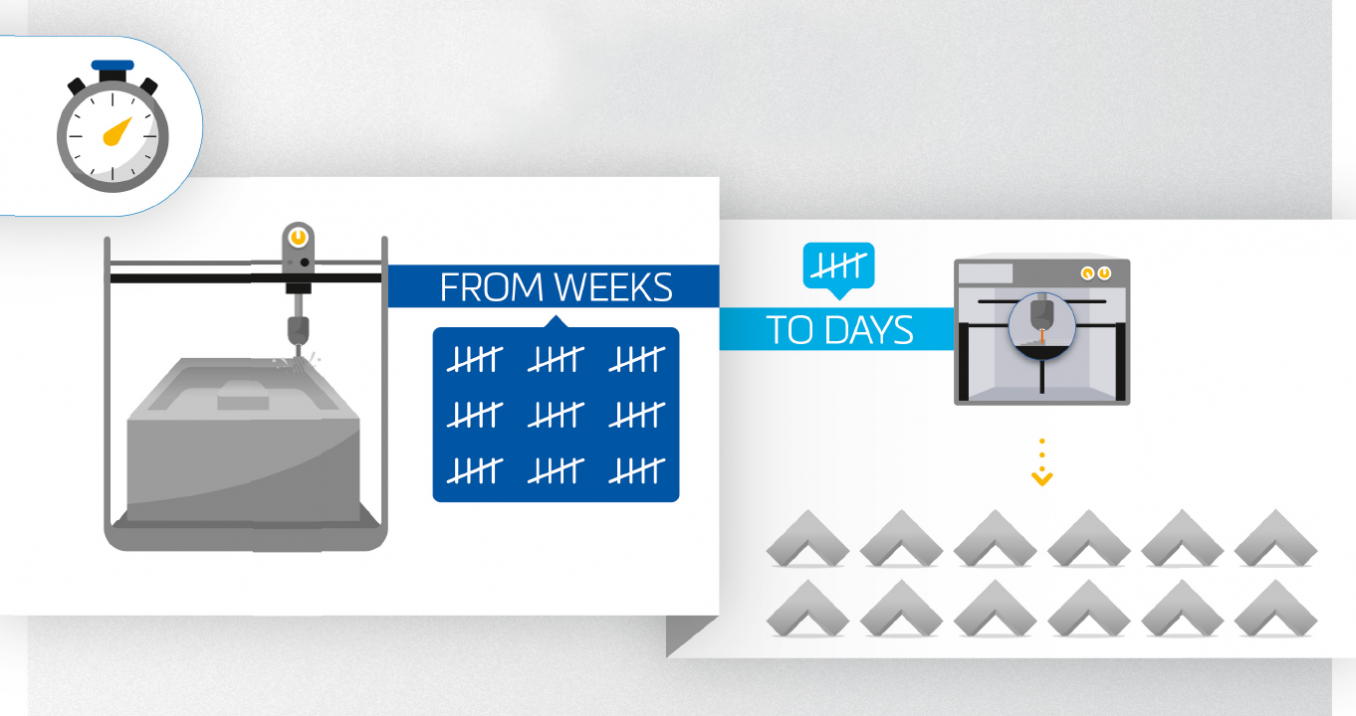
An obvious, widely known advantage of additive manufacturing in general is that you can go from design to finished part faster. A lot of this is down to time saved on tooling.
No part-specific tools are needed for 3D Printing and the closest you get to a part-specific fixture is the support structures that are generated as part of the printing process.
All this enables lead times of days, rather than weeks. InMotion, the team behind an ambitious electric racing car project for Le Mans 2019, was able to design and make a new lightweight suspension wishbone from Titanium in under a week.
Regardless of what it is you’re printing, advances in processing software for 3D Printing mean that many of the more time-consuming aspects of setting up and preparing a build are now automated or otherwise optimized, enabling highly efficient 3D Printing processes.
Time is of course money, so savings from reduced downtime, faster routes to product and improved production agility all add up. But 3D printing metal parts can have an even more direct financial impact.
Ready to give Metal 3D Printing a go? We would love to hear about your project.
2
Save money: building up vs. milling down
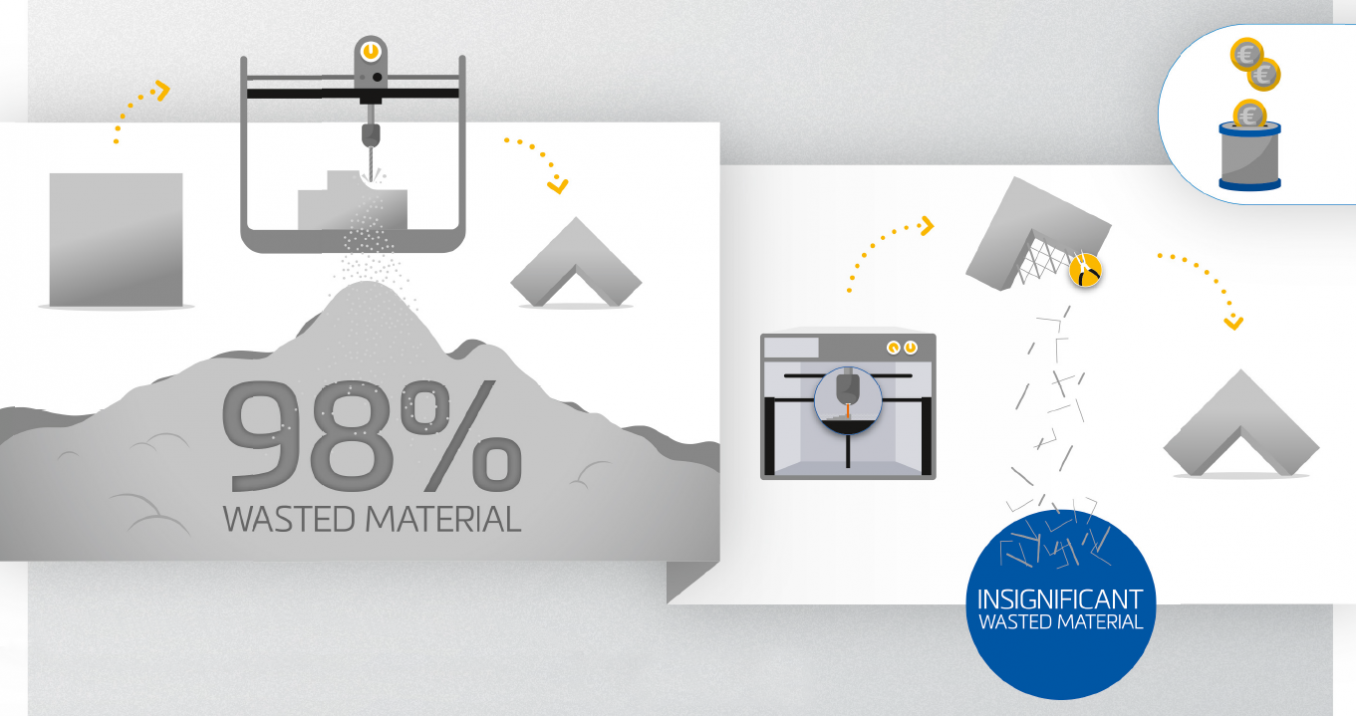
If you’re currently machining, then you know how much more material you need to start with than will actually end up in the part. The rest is costly scrap. It’s scrap that needs to be removed, transported, recycled, and that you paid for as – in the case of metal – expensive additional raw material at the beginning.
When you 3D print metal parts, you only put material where it is needed. Waste is minimal. Almost all material used goes into the final part (minus any supports generated). Additionally, the design limitations of traditional methods often mean unnecessary material is added to avoid complexity or assure manufacturability. A suction gripper we redesigned for 3D printing in aluminum ended up weighing around a quarter of the previous version, at less than a third of the price.
The more efficient use of material has knock-on effects. For example, it enables leaner production operations, as less material needs to be purchased, stored and moved around. And the weight reduction impacts not just the production of the part, but also its operational cost and performance. This is particularly true in Aerospace and Aeronautics, where every gram counts (sending one kilogram into orbit currently comes with a price tag of $20,000).
The other big cost factor is, again, the tooling. Think about the number of bespoke tools, fixtures, forms or molds that are involved in the making of parts with traditional methods. Now imagine most of them gone.
3
Do more: many birds, one stone
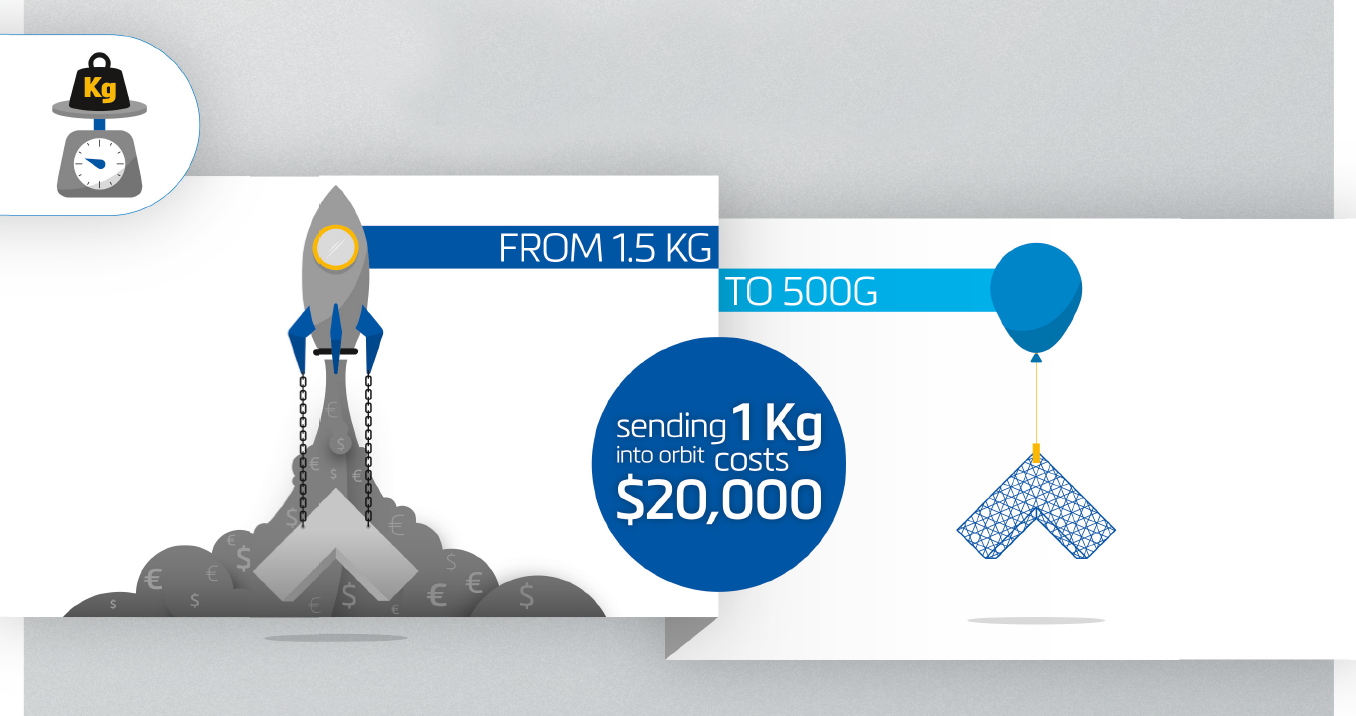
3D Printing tears up one fundamental part of the metal rulebook – the one about complexity being bad. In metal 3D-printed parts, complexity no longer adds cost. This means you can combine different functionalities into a single printed part, without having to worry about increasing part complexity.
Where you’ve previously had several separate parts in bolted or welded construction, you can now have only one, printed in one go. You can print assemblies. This in turn can save on assembly-related costs but also maintenance costs down the line, as single-build assemblies can eliminate risks like leakage or part damage from operator error during assembly.
You can also add or improve functionality by designing them in. Intricate internal structures, lattices and channels can be printed to improve airflow or lubrication. External surface textures and topographies can be created, for example to improve haptics or adhesion or to connect to another part.
4
Do it better: no limits
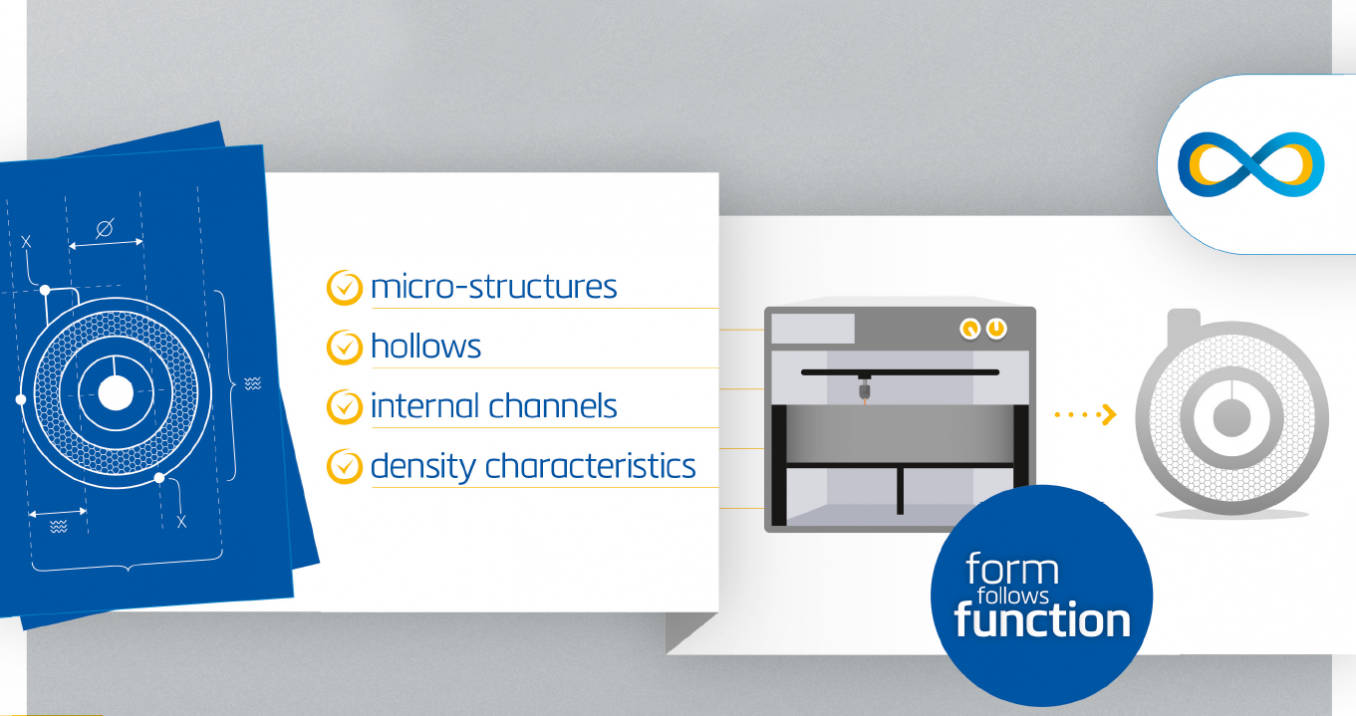
Where we’ve previously designed for manufacturing, taking into account the restrictions and limitations of casting or machining, 3D Printing allows us to let form follow function, to design the part as we need it to be, not to suit the tools we’re using to make it.
This freedom allows you to approach the design of parts in whole new ways and create shapes and structures that simply weren’t possible or were too expensive before. The potential for innovation is significant.
3D Printing lends itself to evolutionary design approaches. It’s not just faster to make the final part, but also to find the final design in quick iterations, with the ability to test the real part every time. This means the space of time between prototypes shrinks drastically, making room for experimentation and innovation that will result in a better final part.
5
Protect your competitive edge
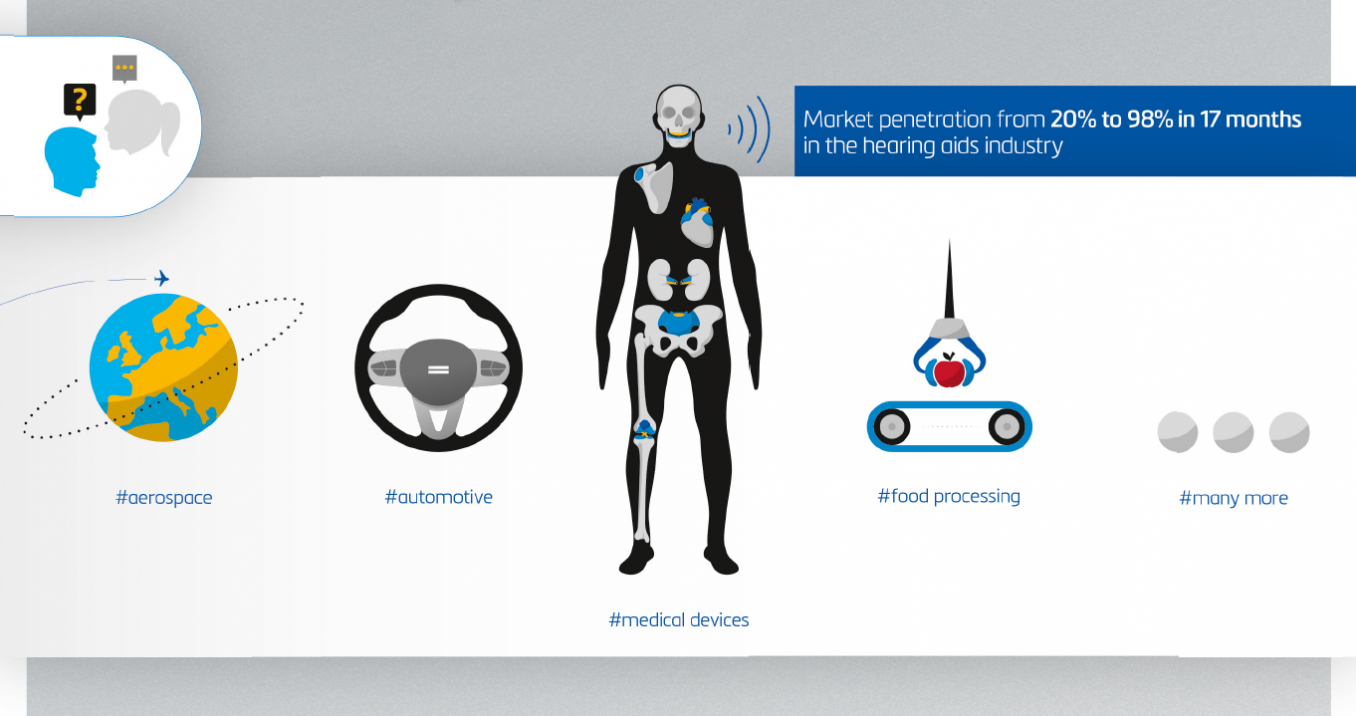
All of the above will contribute to maintaining your competitive edge as a manufacturer, designer or innovator, but 3D Printing also offers new opportunities to differentiate your offering. Additive manufacturing shakes up all previous notions of economies of scale. Due to the low start-up costs, it becomes economical to produce in small batches, on demand or mass-customized, serving niches that in the past have been too costly to serve. New things are possible.
Both the potential for new business models or product strategies and the design freedoms of 3D Printing require a new, different way of thinking. In the same way as we’ve learned to design for milling, turning and casting, we have to learn to think additive. However, you can accelerate your learning by starting small and sharing the success stories across your team or organization. This will ensure that additive manufacturing becomes a natural part of your toolbox.
Metal 3D Printing is on the cusp of going mainstream. Stay ahead of the curve and build your case for printing metal.
Got any design questions?
Our Design & Engineering team would love to hear them. In Metal 3D Printing, more so than in conventional technologies, design plays a crucial role.
Talk to us about what you have in mind, and we will work with you to make it happen.
Subscribe to receive design tips, news, and cases about Metal 3D Printing.
Discover more about 3D-printed metal and its ideal applications
The key to successful 3D printing of metal parts is identifying the right applications. Do that and watch your metal production become faster, leaner and more innovation-receptive.

